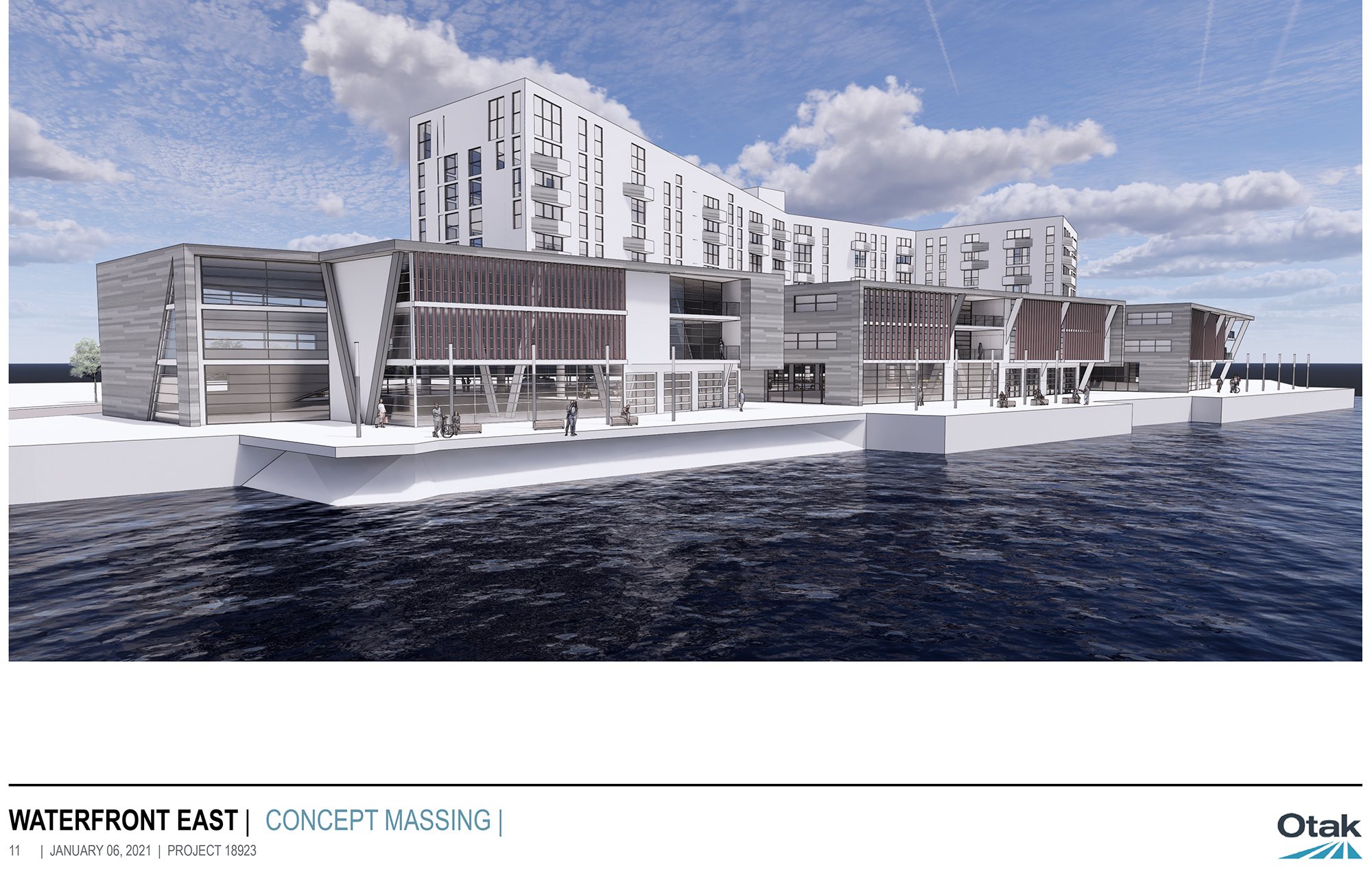A project that aims to rebrand and redevelop the southern gateway to Vancouver was delayed by city councilors Monday, who say the initial development agreement doesn’t set ambitious enough climate standards.
Councilors will reconsider the closely watched development agreement on July 12. Kirkland Development proposes to transform the property — currently home to Who Song and Larry’s, the former Joe’s Crab Shack and a fenced-off pier — into around 140,000 square feet of apartments, restaurants and retail spaces, with a 15-foot-wide public boardwalk.
While city councilors expressed excitement about the project, a few said that the green building standards laid out in the development agreement left a little to be desired. The current agreement indicates that Kirkland would need to meet requirements for LEED Silver certification or another credentialed equivalent.
Silver is the third-highest of four certification options offered by the Leadership in Energy and Environmental Design program, behind gold and platinum. Meeting a more stringent LEED standard can involve installing more water and energy-efficient infrastructure and incorporating more sustainable materials into the project, which can increase the construction cost.
“I remain underwhelmed at the sustainability objectives of this project,” Councilor Erik Paulsen said.
If the project outlined in the agreement moves forward, it would be the first redevelopment of the Vancouver waterfront east of the Interstate 5 Bridge. Kirkland Development is currently building the Hotel Indigo Kirkland Tower project on Block 4, on the west side of the bridge.
The standard for existing waterfront buildings is LEED Silver, Paulsen acknowledged, but it was put into place around a decade ago.
“Our thinking about sustainability … has evolved substantially in that time,” Paulsen said. More ambitious goals “would be a reasonable expectation for a property like this, especially considering public investment and tax waivers.”
CEO Dean Kirkland bristled at Paulsen’s comment during the public hearing.
“I do feel like we’re being held to a higher standard than the west side,” Kirkland said, adding that Hotel Indigo Kirkland Tower is “the best-looking building over there.”
Kirkland also pointed out that his proposal would reopen public access to the Columbia River waterfront by demolishing and replacing a sagging pier. The walkway was closed to pedestrians in 2007 due to safety concerns.
It’s an amenity “that the city’s supposed to maintain. It’s sat there decrepit,” Kirkland said. “We want to clean it up. We want to do something huge for the city of Vancouver.”
Councilor Ty Stober said that a LEED Silver certification would leave him disappointed. But he acknowledged that the back-and-forth on agreement negotiations is in part a product of unfortunate timing. The city is in the middle of drafting its environmental policy, including more ambitious climate standards for new development.
“We are at an awkward time right now — we haven’t clearly defined what our new standards are,” Stober said.
Development details
The property’s location, less than 200 feet from Interstate 5 and situated along the north bank of the Columbia River, makes it of particular interest to city councilors. Thousands of vehicles travel into Vancouver daily via the I-5 Bridge; this site is the first thing most people see on the Washington side.
It encompasses 2.03 acres. Kirkland’s plan is to demolish the two existing restaurant buildings and replace them with four new buildings: an eight-story, 220-unit residential building with ground-floor retail or restaurant space, and three three-story mixed-use buildings with office space, retail and restaurants.
Chad Eiken, Vancouver’s director of community and economic development, estimated that the proposal would provide enough space to house seven or eight restaurants.
The agreement would additionally see the construction of an underground parking garage with around 300 spaces, as well as 12 new surface parking spaces.
As part of a deal that would later grant Kirkland an eight-year exemption on a portion of the project’s property taxes, the company also agreed to demolish the decaying pier and replace it with a usable, 15-foot-wide public boardwalk to reconnect the existing Waterfront Renaissance Trail segments. City documents refer to the proposed amenity as the Renaissance Boardwalk.
“(The site) is the first thing you see when you come across the mighty Columbia River,” Kirkland said. “With COVID coming to a slow end, I’m very excited about this project.”




